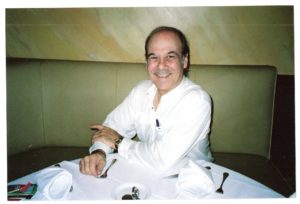Correcting Yet More of the Herald’s Unending Hooey
[AdSense-A]
On Wednesday, March 18, 2020, the once great (one of Time Magazine’s “Ten Best Newspapers” for many years, now a shadow of its former self, and “trust me,” the going to a Saturday on-line with no print edition is just the beginning of what will [and, no, I can’t tell you how soon] eventually if not shortly become an all-on-line newspaper) Miami Herald, published, on page 12A, an article headlined “NAACP demands firings of police chief and city manager.”
Because this column appears in several fine on-line Facebook or Yahoo groups, most of which have strict rules against political comments, I avoided entering such statements regarding the mayor and city manager of the city in which I lived for 35 years, but I feel that the letter to the editor, sent on Sunday, March 22nd, which will likely not be printed (as the late, great Neil Rogers would say regarding the Herald, “they hate me like poison” so you take it from there), should receive as wide a circulation as possible.
That newspaper has become infamous for tooting its own horn and writing about what a great job it is doing (and, yes, we must give them credit for the Epstein series) is absolutely equally deficient in anything which their people write about history. In a coming article I will go into what I have tried to do to help them “get their act together,” historically speaking, all such efforts having come to naught.
In any case, that article was part of a number of pieces in that day’s Herald relating to the Corona Virus cutbacks and Miami Beach and extending into how the Beach had handled the various spring break and “urban weekend” holidays, particularly in relation to minority groups.
Said letter follows and I submit it to you for your consideration. As always, comments from our readers are welcome.
“While the article “NAACP demands firings of police chief and city manager” in reference to the racial situation on Miami Beach, which appeared in the Herald on Wednesday, March 18, was both interesting and, for the most part, factual, one comment, in the second column on page 12A, was, regretfully, an only partial look at certain past events which occurred on Miami Beach but which applied to every person, of every race, creed, gender, age, handicap or national origin who worked on Miami Beach in certain businesses and industries from the early 1950s until sometime in the 1970s when the U. S. Supreme Court ruled that the practice of requiring identification cards in order to be gainfully employed was illegal.
“The statement, in the 5th complete paragraph on that page, was as follows: “Some civil rights leaders who gathered last week to demand the change cited even older history, like the 1960s when blacks weren’t permitted to cross the causeway without being fingerprinted, photographed and carrying a work permit.” It is extremely important that the facts are brought to the fore and that the historical record is set straight.
“First, which causeway? I grew up on Miami Beach, my family having moved there in 1946 and can assure the person who made that comment that no such thing—not permitting blacks “to cross the causeway” (of which, by the 1960s, there were five from the mainland to the east side of Biscayne Bay south of the Sunny Isles Causeway at 163rd Street)—was in effect in the 1960s. Second, as far as “being fingerprinted, photographed and carrying a work permit,” while that comment is partially correct, it must be noted that said rule applied to anybody who worked in a retail business or in any function in the hospitality business, hotels, restaurants or clubs, whether black, white or Hispanic, on Miami Beach. Each person, including Miami Beach residents, was required to report to the Miami Beach police station on a yearly basis, be photographed and fingerprinted, pay $1.00 (later, $2.00) in order to receive an i. d. card, which then allowed that person, whoever he or she was, to work in those businesses on Miami Beach, although the same law was in effect in Bal Harbour and likely many more of the resort communities along the east coast. In short, and this was stated no few times by various officials of the different municipalities, “it was a terrific and not difficult way to raise money.”
“Finally, a brief but important historical note: Prior to World War Two aliens (generally, Hispanics) and African-Americans were required to wear a metal badge with a number on it and initials identifying the fact that that person was either “alien” or “colored” but that practice was ended by the Army Air Force’s Provost Marshal shortly after the military moved on to Miami Beach and took over so many of the hotels and restaurants. After the war ended, and beginning in the 1950s, the i. d. card rule went into effect.
“Were there other infringements upon the rights of African-Americans after the war and up until the passage of the Civil Rights Act of 1964? Absolutely, but the i. d. card law was one that applied to every person who worked in the aforementioned industries on Miami Beach, with no racial, ethnic or religious group being singled out.”
Be—and stay—well all and please, especially during these difficult times, take care and let’s look out for one another.
[si-contact-form form=’2′]


